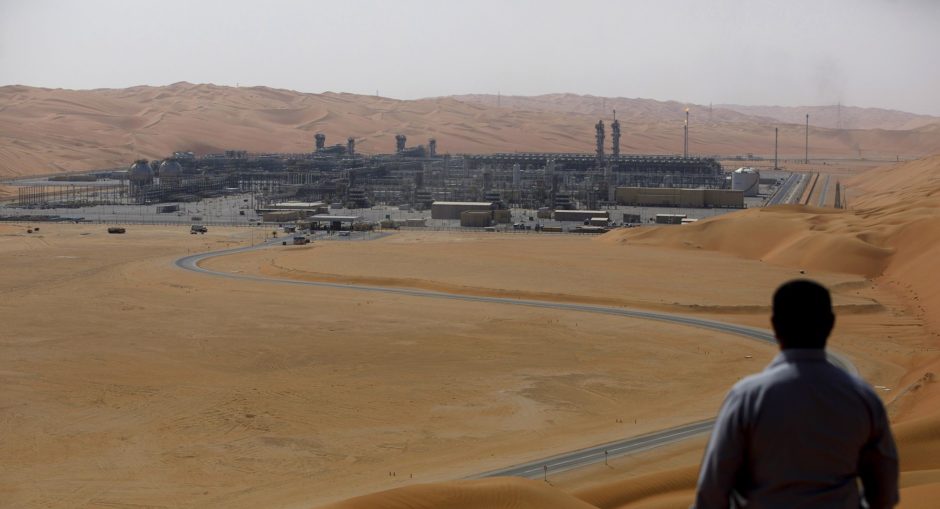
“If we are to successfully transition to the energy system of tomorrow, we cannot simply unplug from the energy system of today,” Adnoc CEO Dr Sultan Al Jaber warned the ADIPEC conference in Abu Dhabi this month.
Record high gas and electricity prices in Europe and East Asia, and worldwide complaints about elevated oil prices, seem to bear out the thesis.
The ADIPEC conference, though historically themed around petroleum, was remarkable this year for a focus on a much wider spread of energy options, particularly hydrogen. Major announcements covered drilling and gas contract awards, as usual, but also the production of ‘blue’ ammonia in Abu Dhabi, hydrogen co-operation with Russia and a joint venture between Adnoc and utility Taqa on green hydrogen and renewables.
It was not surprising the energy transition was on everyone’s minds at ADIPEC. Following on from this month’s COP26 climate talks in Glasgow – to which oil companies were not welcome – the next two annual COP events will be held in Egypt and the UAE.
Just before COP26, the UAE committed to reach net-zero greenhouse gas emissions by 2050.
“The oil and gas industry will have to invest over US$600 billion every year … until 2030 … just to keep up with expected demand,” Al Jaber went on to say. Upstream investment was last above this level in 2014, before the oil price plunge late that year. It then hovered around $400-500 billion per year, barely passing the $300 billion mark in each of 2020 and 2021.
Future plans
So, even before the pandemic, there was underinvestment in future supplies. This was not mostly due to energy transition or climate policies.
It was, perhaps, partly a reflection of lower expected future demand and concerns about ‘peak oil demand’ because of the rise of electric vehicles and other low-carbon technologies. Several major oil companies have committed to lowering emissions and cutting upstream production over the coming decade. BP notably sees its oil and gas output dropping at least 40% by 2030.
But more important was a long legacy of low returns to shareholders and the low prices since 2014, which had led the OPEC+ alliance to impose strict production cuts since its formation in 2016. The strong rebound of demand following 2020s lockdowns has caught the industry, like many others, by surprise.
The US rig count is rising, but much more slowly than in the past two shale-era recoveries from low prices, as investors continue to require financial discipline. Perhaps in the new year, upstream budgets will start being augmented, but spending outside the shale patch will take much longer to show the fruits of added production.
Which path
Meanwhile, governments and financial institutions at COP26 were busily trying to limit funding to new fossil fuel projects. The International Energy Agency’s (IEA) report in May on reaching net zero had as its headline finding the declaration that no development of new oil and gas fields would be required if the world were on a net-zero trajectory.
The problem is, of course, that we are not on such a path. Greenhouse gas emissions in 2021 are likely to be higher than pre-pandemic, despite earlier expectations of a slow economic recovery with fossil fuel use never again hitting 2019 levels.
Vicki Hollub, CEO of US independent oil firm Occidental Petroleum, said at ADIPEC that oil demand would pass pre-pandemic levels by 2023. OPEC itself expects that mark to be surpassed in 2022.
Still, the oil and gas industry will bear the brunt of public wrath if prices rise uncomfortably high. The challenge is how to proceed when supply and demand are mismatched.
Supply shift
On the supply side, the petroleum industry could assume that countries will be slow to implement their net zero pledges at least over the next few years, and continue investing in a measured way in oil output. Gas, despite being swept up in parts of Europe and North America in a generalised dislike of fossil fuels, has an important medium-term role in replacing coal in Asia and balancing renewables in Europe.
Efforts to cut the resource’s greenhouse gas footprint should be redoubled. There are a range of ways to do this including eliminating flaring and methane leaks, improving energy efficiency, and running facilities with low-carbon electricity as in Adnoc’s agreement to use nuclear and solar power.
Carbon capture and storage (CCS) projects should be rapidly scaled up to tackle emissions from sour gas processing, refineries and petrochemical plants.
Furthermore, the industry should work on additional low-carbon fuels.
Hydrogen is the key one, both in its ‘blue’ form (from natural gas with CCS) and ‘green’ (from renewables).
Realistically, though, hydrogen production will be paced by the evolution of firm demand, and large-scale low-carbon hydrogen should start arriving in export markets around 2025-26.
Sustainable aviation fuels are another critical area, only used in tiny amounts currently, but essential for airlines to meet their goals for emissions reductions.
So indeed “we cannot just flip a switch,” as Al Jaber observed.
Energy supplies may change in nature but need to stay safe, reliable and affordable. The current energy industry will not be unplugged. But it will be rewired – and that means transforming as fast as possible, while keeping the system running smoothly.
Robin M. Mills is CEO of Qamar Energy, and author of The Myth of the Oil Crisis and Capturing Carbon
Recommended for you

